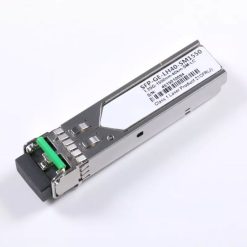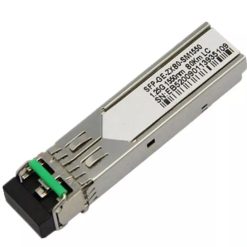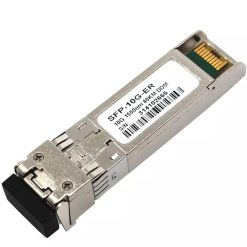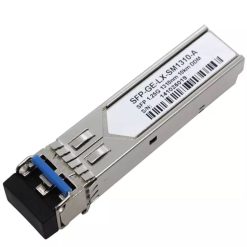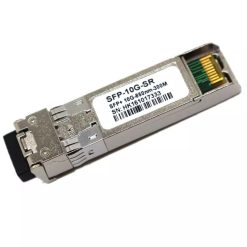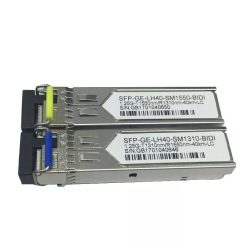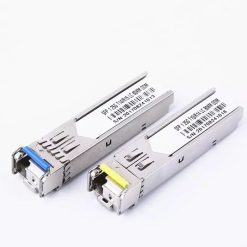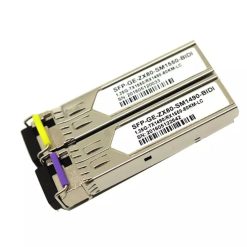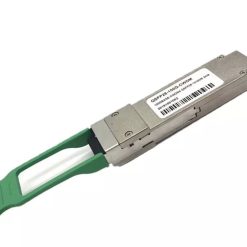What is Optical Transceiver Modules/SFP?
Optical Transceiver Modules/SFP, also called fiber optic transceiver or optical transceiver, is a typically hot-pluggable device used in high-bandwidth data communications applications. Transceiver modules typically have an electrical interface on the side that connects to the inside of the system and an optical interface on the other side that connects to the various devices through a fiber optic cable. An optical module functions as a photoelectric converter which converts the electrical signal into light and vice versa. There are multiple transceiver module types available that can be used in telecommunications applications. The different specs and designs are widely used to meet the changing needs of designers.

How Many Types of Optical Modules?
GBIC was the earliest 1G module. The SFP interface was designed after the GBIC interface, and due to its smaller size, SFP is sometimes known as Mini-GBIC. SFP modules are commercially available with capability for data rates up to 100M or 1000M/1G. A variant standard, XENPAK module which is capable of 10Gbit/s is designed in 2001. However, advances in technology led to more compact form factors for 10 Gigabit Ethernet applications. Soon after 2001, two related standards emerged: XPAK and X2. Later on, vendors generally changed to use XFP modules for longer distances, and SFP+ modules for high density. As escalating demand for higher speed and bandwidth, 25GbE optics like SFP28 Modules, 40GbE optics like QSFP/QSFP+ modules, and 100GbE optics like CFP transceiver and QSFP28 modules are being widely used
- XFP (10GB Small Form-factor Pluggable) optical module: “X” is the abbreviation of Roman numerals 10, all XFP modules are 10G optical module. The XFP optical module supports LC fiber optic connectors and supports hot plugging. Compared to SFP+ and SFP optical modules, XFP optical modules are larger and longer.
- SFP (Small Form-factor Pluggable) optical module: smaller than XFP, SFP optical modules support LC fiber optic connectors, hot plugging.
- SFP+ (Small Form-factor Pluggable Plus) optical module: SFP+ refers to the increased rate of SFP module, sensitive to EMI.
- QSFP+ (Quad Small Form-factor Pluggable Plus) optical module: four-channel small hot plugging optical module. The QSFP + optical module supports MPO fiber connectors, which are larger in size than SFP + optical modules.
- CFP (Centum Form-factor Pluggable) optical module: length × width × height of CFP is defined as 144.75mm × 82mm × 13.6mm, high-speed, hot plugging and supporting for data communications and telecommunications applications.
- QSFP28 optical module: the interface package size of QSFP28 is the same with QSFP+, which is mainly used in Data Center application.
- OSFP (Octal Small Form Factor Pluggable) optical module: the OSFP is a new pluggable form factor with eight high speed electrical lanes that will initially support 400 Gbps (8x50G). It is slightly wider and deeper than the QSFP but it still supports 32 OSFP ports per 1U front panel, enabling 12.8 Tbps per 1U.
- QSFP-DD (Quad Small Form Factor Pluggable Double Density) optical module: QSFP-DD is a new module and cage/connector system similar to current QSFP, but with an additional row of contacts providing for an eight lane electrical interface. It is being developed by the QSFP-DD MSA as a key part of the industry’s effort to enable high-speed solutions.
XFP/SFP/SFP+/QSFP+/CFP/QSFP28/OSFP/QSFP-DD/-2G/4G/8G/10G/16G/25G/32G/40G/50G/100G/200G/400G/800G-BiDi/CWDM/DWDM






